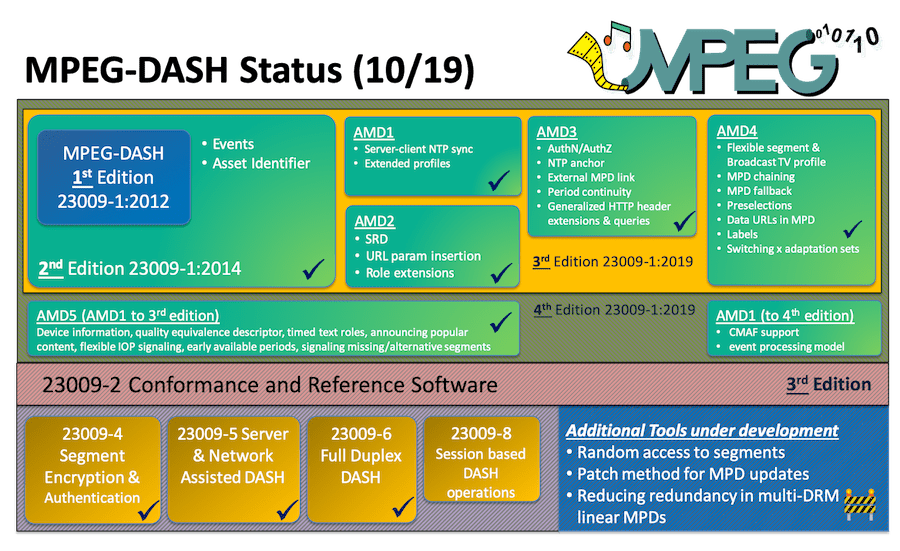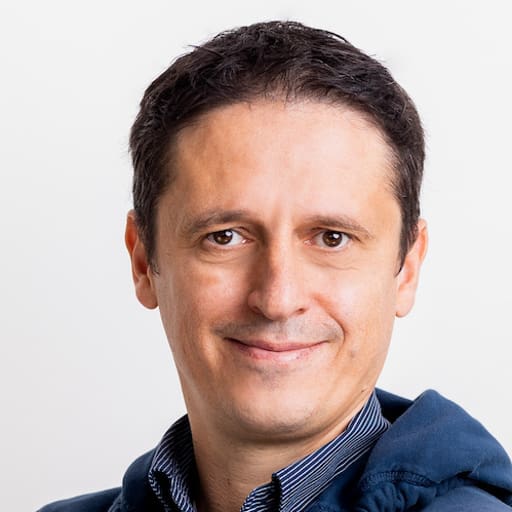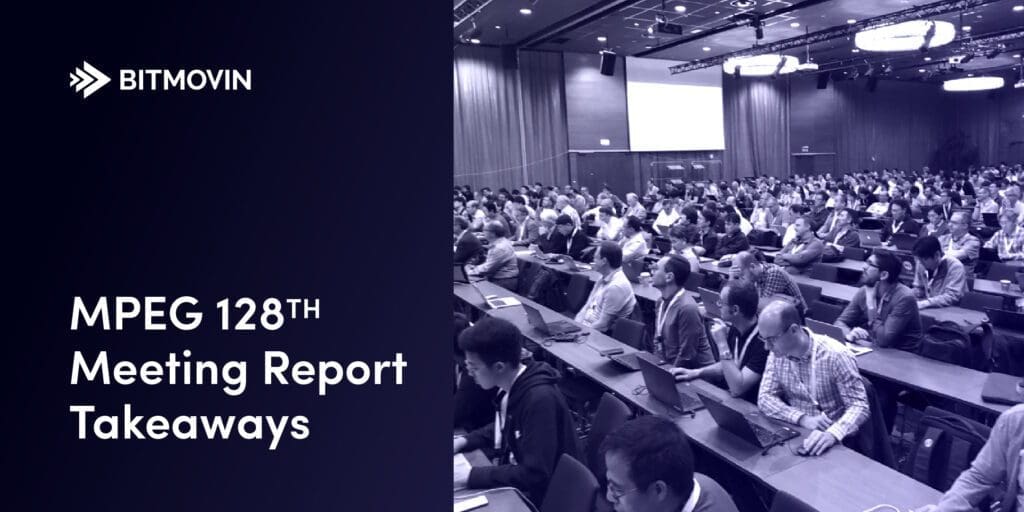
Media Formats progress towards Low Complexity and Consumer Interactivity
“Shaping the Future of Video” is not just a catchy slogan that we like to throw around, rather it’s Bitmovin’s company vision. Not only do we keep a close eye on the industry trends, but we’re actively taking part in standardization activities to improve the quality of video technologies. I have been a member and attendant of the Moving Pictures Experts Group for 15+ years and have been documenting the progress since early 2010.
The goal of each meeting is to provide a working group and open discussion amongst industry experts to yield the best video standards. At each meeting different technical submissions are reviewed by the committee and work is assigned to members for the next meeting. This allows MPEG to attract the best expertise in its fields and to produce the technically most advanced standards.
At the fourth and final meeting of 2019 in Geneva, CH, the main topics of discussion were:
- Low Complexity Enhancement Video Coding (LCEVC) Promoted from Working Draft to Committee Draft
- 2nd Edition of Omnidirectional Media Format (OMAF) has reached the committee draft – the first milestone in the standards process
- Genomic Information Representation – Part 4 Reference Software and Part 5 Conformance Promoted to Draft International Standard
The corresponding press release of the 128th MPEG meeting can be found here: https://mpeg.chiariglione.org/meetings/128. This report focused on video coding aspects (i.e., LCEVC) and immersive media applications (i.e., OMAF). Concluded with an update about adaptive streaming formats (i.e., DASH and CMAF).
Low Complexity Enhancement Video Coding leads the 128th MPEG Meeting
LCEVC is a multi layer coding approach built on already existing codecs at the base layer. Starting from an existing codec, a very low complexity enhancement layer is defined and can then be decoded in software with low power System on a Chip (SoC) platforms. This approach allows backwards-compatibility with existing deployments based on any codec. Furthermore, due to its low complexity, LCEVC can be retrofitted to devices like set-top boxes with a simple software update.
Low Complexity Enhancement Video Coding (LCEVC) has been promoted from Working Draft (WD) to Committee Draft (CD), the first milestone in the ISO/IEC standardization process (full process defined). LCEVC is part two of MPEG-5 or ISO/IEC 23094-2 if you prefer the always-easy-to-remember ISO codes. MPEG-5 part 1 (essential video coding) was initially introduced at the beginning of 2019 at the MPEG 125 meeting and LCEVC (otherwise known as MPEG-5 Part 2) is a standardized video coding solution that leverages other video codecs to improve video compression efficiency while maintaining or lowering the overall encoding and decoding complexity.
The LCEVC standard uses a lightweight video codec to add up to two layers of encoded residuals. The aim of these layers is correcting artifacts produced by the base video codec and adding detail and sharpness for the final output video.
The target of this standard is to enable software or hardware codecs (like emobile devices, Set Top Boxes (STBs), and PC-based decoders) with extra processing capabilities. Additional benefits include reduction in implementation complexity or a corresponding expansion in spatial resolution.
Omnidirectional Media Format Promotions
The scope of the Omnidirectional Media Format (OMAF) is about 360° video, images, audio and associated timed text. The OMAF specifies (i) coordinate systems, (ii) projection and rectangular region-wise packing methods, (iii) storage of omnidirectional media and the associated metadata using ISOBMFF, (iv) encapsulation, signaling and streaming of omnidirectional media in DASH and MPEG Media Transport (MMT), and (v) media profiles and presentation profiles.
The first edition of OMAF includes encapsulation and signaling in ISOBMFF as well as streaming of omnidirectional media (DASH and MMT) and will reach its final milestone by the end of 2020.
In addition to LCEVC, the second edition of OMAF (ISO/IEC 23090-2) was also promoted to committee draft (CD). The new committee draft includes:
- support of improved overlay of graphics or textual data on top of video,
- efficient signaling of videos structured in multiple sub parts,
- enabling more than one viewpoint, and
- new profiles supporting dynamic bitstream generation according to the viewport.
360° video is a vital use case towards a fully immersive media experience. Devices capable of capturing and consuming such content are increasingly available to the common consumer and will likely contribute to the dissemination of 360 Video. However, it is also understood that complexity increases significantly, specifically in respect to large-scale deployments due to increased content volume, time constraints (latency), and resulting quality issues.
DASH and CMAF
The 4th edition of DASH (ISO/IEC 23009-1) will be published soon and MPEG is currently working towards a first amendment which will cover (i) CMAF support and (ii) event processing model. An overview of all DASH standards is depicted in the figure below.

The 2nd edition of the CMAF standard (ISO/IEC 23000-19) will be available soon and MPEG is currently reviewing other additional tools in the so-called ‘technologies under considerations’ document. A working draft for additional media profiles is also under preparation.
At the ACM Multimedia Conference 2019 in Nice, France I gave a tutorial entitled “A Journey towards Fully Immersive Media Access” which includes updates related to DASH and CMAF. The slides are available here.
Click here for more information about MPEG meetings and their developments
Check out the following links for other great reads!
A little lost about the Formats described above? Check out our Fun with Container Formats blog series to learn more!
- Part 1 – Terminology & Codecs
- Part 2 – MPEG-4 Part 14 (MPEG 4) & CMAF
- Part 3 – MPEG-Transport Stream & Matriska (WebM)
How do everyday video developers and the video tech industry utilize these standards? Check out our 2019 Video Developer Report.
To see these formats tested against existing Per-Title Encoding products, by industry expert Jan Ozer, Check out the following Whitepaper: Choosing the Best Per-Title Encoding Technology




